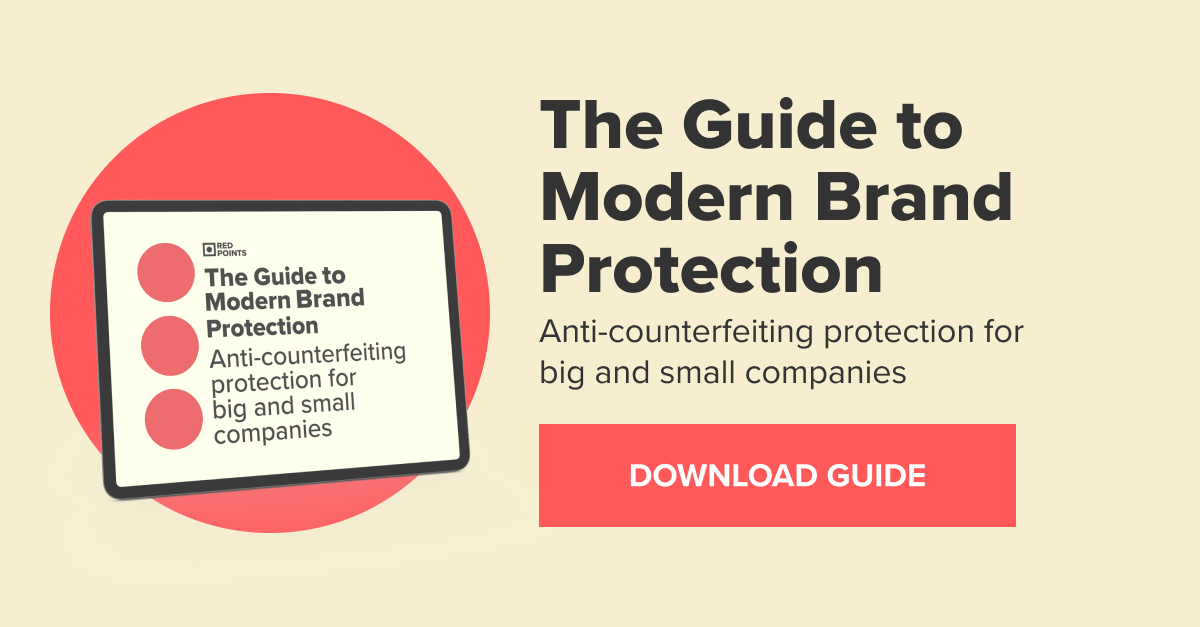The danger of fake goods puts consumers’ health in jeopardy, but do these risks matter to consumers?
This article examines a number of studies by Red Points to see if consumers are aware of the dangers posed by fake goods, and whether or not those consumers are even concerned about these risks.
Counterfeit outdoor apparel
Dangers of counterfeit outdoor apparel
High-quality outdoor apparel is designed to keep the wearer alive in the most hostile environments, like in torrential rainfall and through bitterly cold nights. Counterfeit outdoor apparel is designed to aesthetically imitate authentic brands, not made to strict specifications of insulation and safety. Placing trust in these counterfeits to keep consumers safe in a battle against the elements is a dangerous game to play.
Analysis of the countefeit outdoor apparel research
When asked about the most important factors of selecting outdoor apparel brands, respondents of Red Points counterfeit outdoor apparel research stated they want a quality product that they can rely on for a long time, with price being the third priority. The five biggest factors are as follows:
- Product quality (89.2%)
- Long-lasting (70.4%)
- Price/affordability (63.2%)
- Style (61.2%)
- Performance/ technology used (49.2%)

However, the research showed that consumers of outdoor apparel are extremely price-sensitive, apparently much more so than even they would admit. Interestingly, these answers come from respondents who also display clear awareness and concern about the prevalence of dangerous counterfeits. The vast majority of respondents (87%) are concerned about the prevalence of counterfeit outdoor apparel, and only 1.6% had no concerns at all about buying a fake outdoor apparel product.
However, over 70% of respondents stated they would consider purchasing a discounted item via social media, which Red Points has seen become the newest hotbed for counterfeit products. Furthermore, only 10% of respondents would purchase a jacket that is clearly authentic, but expensive, over a very suspicious, but considerably cheaper version of the same product. So while consumers of outdoor apparel prioritise performance and safety of the apparel in principle, many change their tune when presented with sketchy bargain offers.
Counterfeit sunglasses
DANGERS OF COUNTERFEIT Sunglasses
Sunglasses are supposed to protect the wearer’s eyes from harmful ultraviolet (UV) radiation. Sunglasses sold legally in the the EU, USA and Australia are subject to regulations about UV protection. However, counterfeiters don’t adhere to such safety standards. Since wearing sunglasses causes the eyes’ pupils to widen, counterfeits without UV protection are actually more dangerous to the wearer than wearing no eyewear at all. Risks of counterfeit sunglasses include the gradual degradation of eye functions, temporary blindness and even cancer.
ANALYSIS OF THE COUNTEFEIT Sunglasses RESEARCH
It would appear that consumers display a devil-may-care attitude to the dangers of UV radiation, showing a broad awareness of the existence of the dangers, while lacking the same level of concern. Two-thirds of respondents (66.93%) showed awareness that fake sunglasses often don’t provide UV protection, and can be harmful to their eyes. Yet, 50% admitted to having bought fake sunglasses online, either intentionally or by accident. This figure is likely be higher in reality, considering consumers’ overestimation of their own ability to spot counterfeits.

UV protection is only the 4th most important factor when purchasing sunglasses, after style, durability and affordability. Clearly, consumers focus on aesthetics when purchasing sunglasses, and nearly half (43%) of respondents were unconcerned about the issue of fakes, while 57% stated they had some level of concern.
This willingness to risk wearing sunglasses capable of damaging consumers’ eyes can be explained in two ways. The first is that consumers are unaware of the real dangers UV radiation can pose, perhaps considering it as something that either tans or burns skin when summer rolls around. Alternatively, and much more frighteningly, consumers are fully aware of the damage that UV radiation can cause, and consider it a risk worth taking for finding a stylish look at a bargain price.
Counterfeit children’s products
DANGERS OF COUNTERFEIT Toys
Counterfeit toys have been discovered to contain unacceptably dangerous levels of cancer-causing plastics and heavy metals like lead. Furthermore they’re more likely to break, posing a huge choking hazard for younger children who are prone to chewing on and swallowing toys.
Analysis of the Parents and counterfeits research
Respondents showed much greater concern about counterfeiting when their children become involved. Only 2.6% of parents have knowingly purchased a fake product for their children, with an additional 12% having bought at least one, albeit accidentally. Similarly, only 2.6% of respondents stated they saw nothing wrong with purchasing counterfeits for their children, and another 12% said they would purchase fakes, depending on the type of product. Of course, the lower these numbers are, the better, so ideally respondents would universally refuse counterfeit products, but compared to the sunglasses respondents, this is encouraging.

Parents seem so concerned about counterfeiting that 79% stated they would change their buying habits if they discovered a specific brand was a target of counterfeiting, likely not wanting to risk dangerous of faulty goods ending up in the hands of their children. 82% of respondents have never even encountered a harmful fake product, nor know anyone who has, so it’s a surprising, yet optimistic result to see so many parents showing concern, even though they haven’t personally had a negative experience.
Counterfeit cosmetics
Dangers of counterfeit cosmetics
Counterfeit cosmetics are often riddled with a huge variety of disgusting and toxic ingredients, including (but not nearly limited to): faeces, mercury, lead, cyanide, arsenic, paint-stripper. The danger of fake goods includes chemical burns, rashes and long-term health problems.
Cosmetics consumers do seem to be averse to buying fake cosmetics. Only 3% admitted to having knowingly purchased counterfeits, while 19.5% admitted to having purchased fakes accidentally. Furthermore, consumers of cosmetics products appear to be aware of the grave problem of fakes in the industry, with 58.4% of respondents stating they were concerned or very concerned.

The biggest factor that would motivate consumers to buy from a 3rd party on social media was “if the product was offered by an account I follow and trust” (69%). This figure implies cautious buying habits from cosmetics consumers, and a reluctance to purchase from unknown sources. This hesitation to trust social media sellers is limited, as the second-most important factor was “if the product was offered at a discount rate”, at 57%.
This final point rings true across consumers of almost all industries. Consumers are concerned about the dangers of buying counterfeit products, but these concerns are balanced against the desire to save money. So, do safety concerns matter to consumers, then? The answer is yes, but sometimes, finding a bargain matters more.







